Estimated reading time: 4 minutes

Microsoft’s Azure Cloud continues to gain enterprise users in the growing cloud marketplace amid competitors such as Amazon Web Services (AWS), Google Cloud and IBM, yet it is also often the target of rumors, myths and erroneous information about its capabilities and features.
To battle those myths, this article looks at some of the most egregious claims about Microsoft Azure to help IT professionals get the right information when making cloud infrastructure decisions.
Myth 1 – Microsoft Azure Cloud doesn’t fully support open source software
This is untrue. According to Microsoft, Azure is compatible with a wide range of open source operating systems, programs, and languages, including Linux, Java, Node.js, Python, and Ruby, making it an open and flexible cloud platform.

Open source on Azure can extend a customer’s cloud investment. Nearly one in three Azure virtual machines run Linux.
Myth 2 – Azure is too expensive to use
Not true. Azure pricing is competitive. Microsoft cuts its prices on commodity services including compute, storage and bandwidth services by up to 50 percent, to match similar pricing from competitors such as AWS, according to the company.
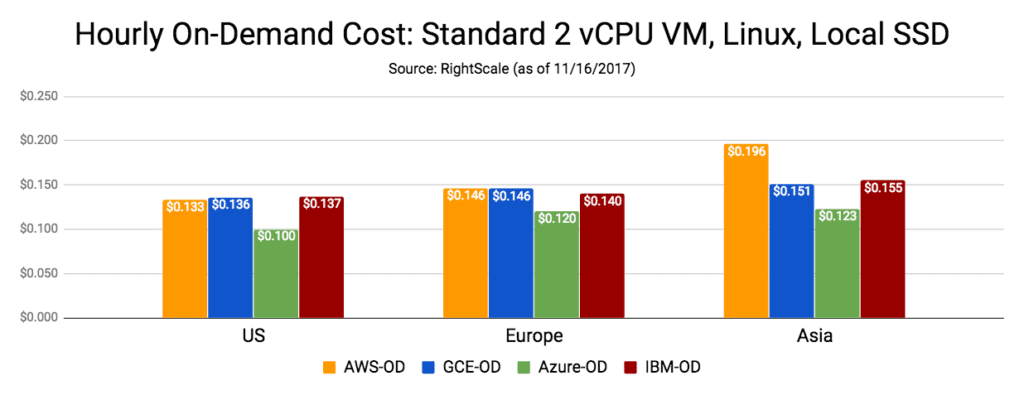 Azure hourly costs are consistently lower or on par with AWS.
Azure hourly costs are consistently lower or on par with AWS.
Myth 3 – Using Azure means submitting to cloud lock-in
This is also not true. Instead, the Azure hybrid cloud platform gives organizations the flexibility to run workloads inside their own on-premises datacenters, in the cloud or using hybrid approaches. Enterprise users can also choose to make changes to their cloud infrastructures at will, moving between on-premises and the cloud.
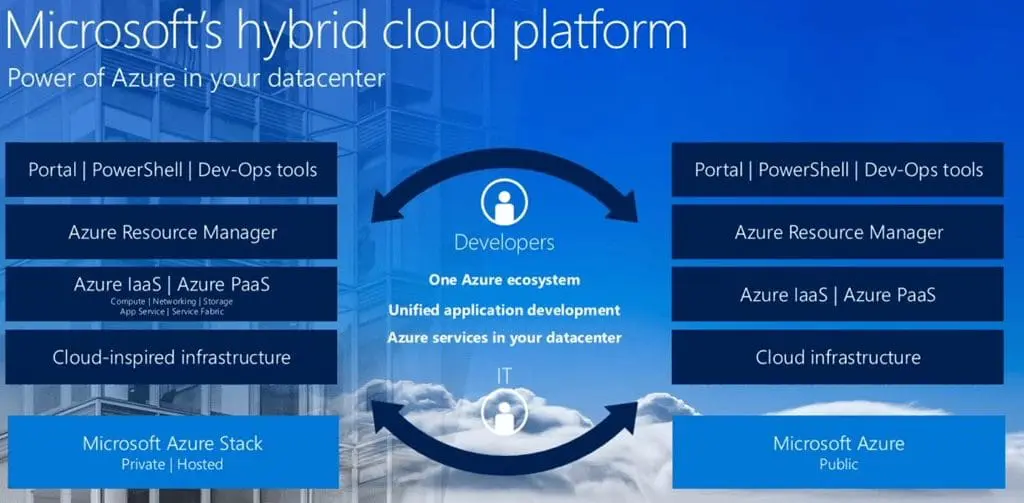 Microsoft Azure Stack takes the power of Azure and
Microsoft Azure Stack takes the power of Azure and
makes it available in your own datacenter.
Myth 4 – Azure isn’t the best choice for growing businesses due to its network size.
Not true. Instead, Azure runs on a growing global network of Microsoft-managed datacenters in 19 regions which offer services in some 140 countries, giving it more localized and regional datacenters than either AWS or Google.
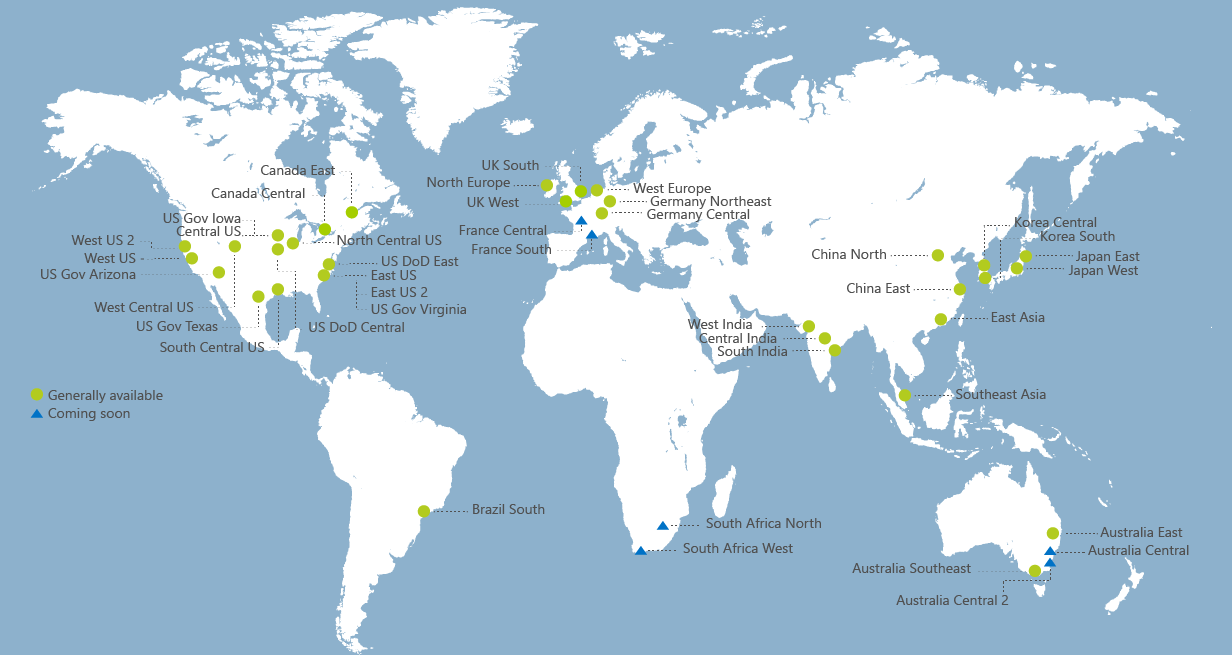 The Global Microsoft Azure Datacenter Footprint
The Global Microsoft Azure Datacenter Footprint
extends to more than 19 regions worldwide.
Myth 5 – Azure isn’t an innovation leader.
That’s not what the experts at Gartner think. Gartner’s Magic Quadrant rankings have designated Azure as an industry leader in both Infrastructure-as-a-Service and Platform-as-a-Service cloud offerings. Azure is constantly adding more platform enhancements to keep Azure fresh for enterprise users.
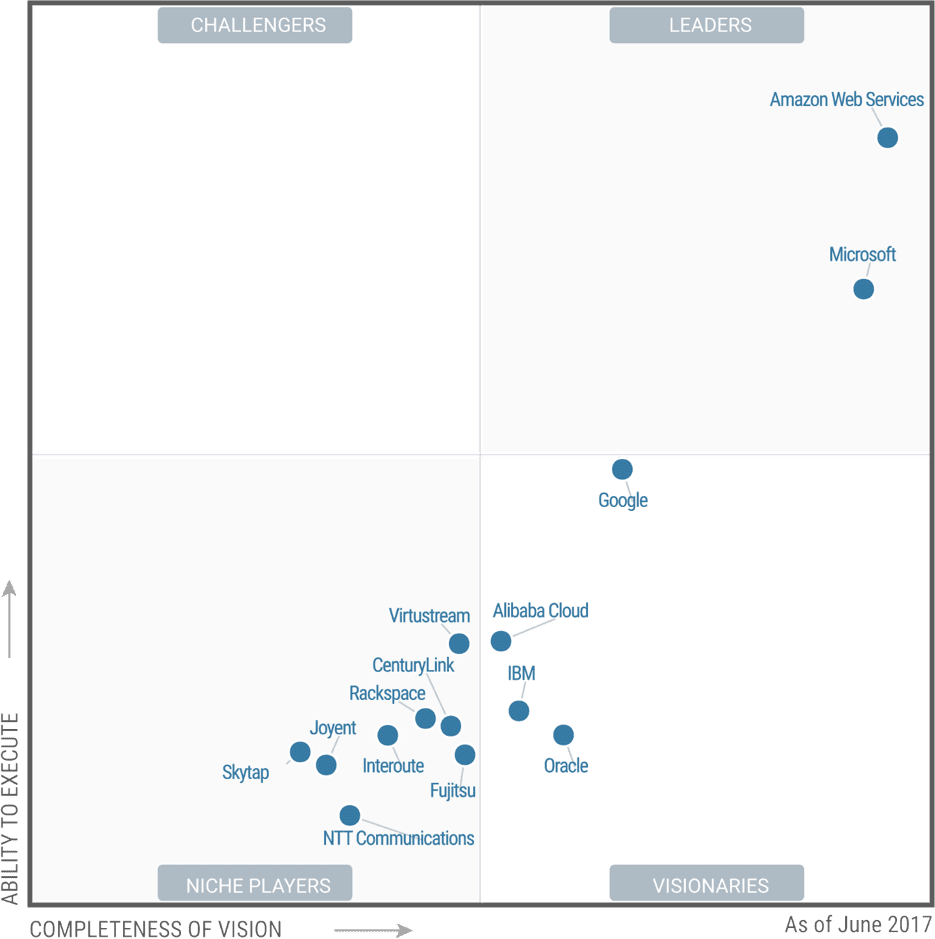 Gartner confirms that Microsoft and AWS are the cloud leaders by a significant margin.
Gartner confirms that Microsoft and AWS are the cloud leaders by a significant margin.
Myth 6 – Azure’s security doesn’t match up to its competitors.
Absolutely false. Instead, Azure meets a broad set of international and industry-specific compliance standards, such as ISO 27001, HIPAA, FedRAMP, SOC 1 and SOC 2, as well as country-specific standards like Australia IRAP, UK G-Cloud, and Singapore MTCS. Rigorous third-party audits, including by the British Standards Institute, verify Azure’s adherence to these strict security controls. The Azure Security Center offers continuous security-health monitoring for an enterprise’s entire cloud environment, including on-premises and in public clouds. Users, meanwhile, have full control and oversight of their data wherever it is located.
Microsoft Azure’s partner ecosystem also provides an abundance of security add-ons, many of which compensate for gaps in Azure’s native toolsets. For example, 5nine’s Azure Firewall solution helps Azure cloud security administrators create, maintain and manage inbound/outbound traffic rules for virtual machines. 5nine will soon introduce 5nine Cloud Security for Azure, which automatically protects Azure VMs across multiple attack points.
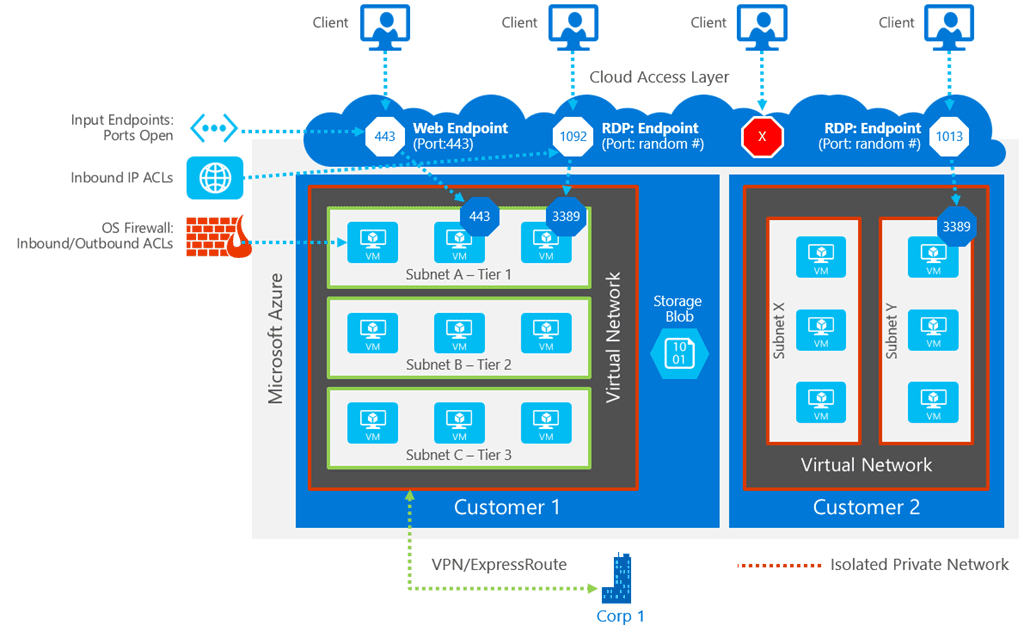 The image above demonstrates how customers are isolated within
The image above demonstrates how customers are isolated within
the Azure virtual network security framework.
Myth 7 – Azure cloud management is difficult
Not true. Modern Service Management from Microsoft helps evolve customers from legacy, traditional IT models toward easier, more efficient, cost-effective and agile service structures. Microsoft’s intelligent cloud (also called Intelligent Edge), coupled with its rich marketplace, provides customers with both Service Management and IT Asset Management solutions. 5nine Manager for Azure will soon be available in the Azure marketplace, enabling customers to automatically monitor, provision, manage and backup Azure workloads.
 Microsoft Modern IT Service Management.
Microsoft Modern IT Service Management.
Conclusion
When evaluating Microsoft Azure for an enterprise cloud, don’t listen to the myths and innuendos that make their way around the internet or in IT meeting rooms.
Until next time, Rob…..
Originally published at https://www.5nine.com/7-azure-cloud-myths-put-to-rest/
